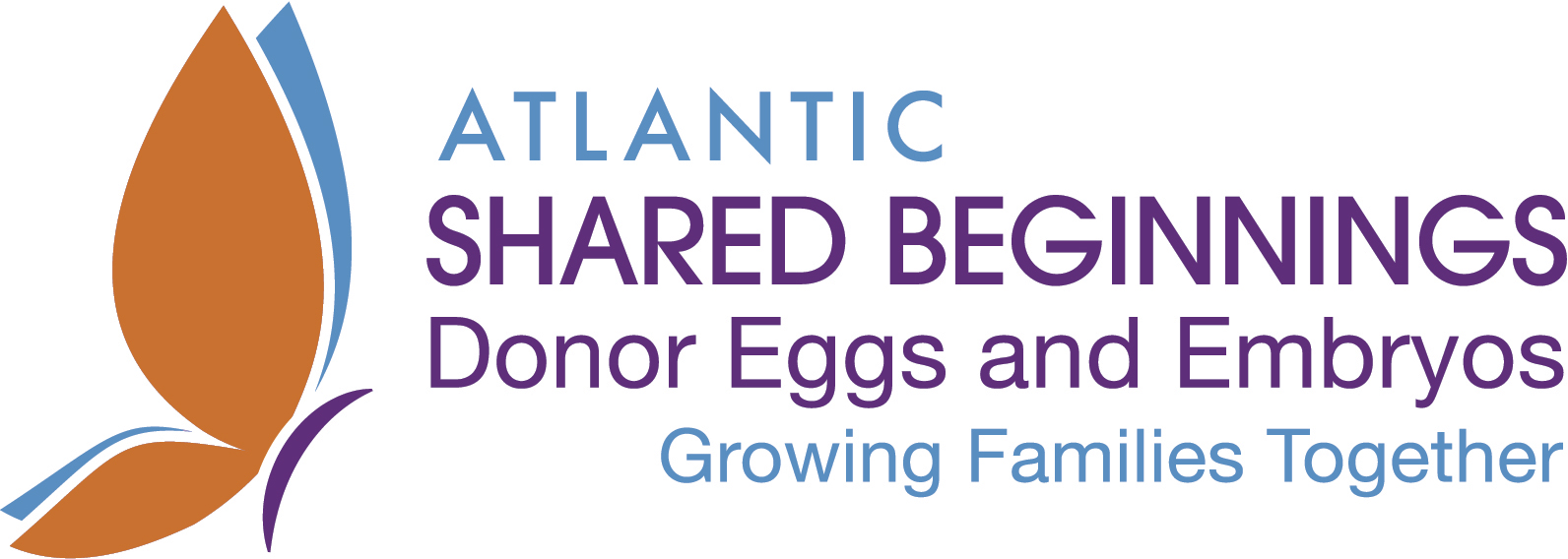A frozen embryo transfer using donor eggs marks the final stage of in vitro fertilization (IVF). In this stage, a medical professional thaws a frozen embryo from a donor egg cycle and transfers it into a woman’s uterus, where it hopefully implants and begins to develop into a fetus.
Firstly, patients interested in frozen embryo transfer (FET) using donor eggs start by selecting an egg donor. Once the donor is chosen, the selected donor undergoes an IVF cycle to create embryos. During the donor’s procedure, medical staff harvests eggs through a medication-assisted ovulation cycle and fertilizes them with either the recipient’s partner’s sperm or a selected donor’s sperm. After allowing the embryos to grow for a specified time established by the lab, the staff then freezes (cryopreserves) all viable embryos.
Consequently, the frozen embryo transfer timeline typically lasts about 2-3 weeks. This timeline begins with the embryo transfer and concludes when the medical team determines if the embryo has successfully implanted in the uterine lining to establish a pregnancy.
Frozen Embryo Transfer Process Step by Step
Here are the general steps involved in a frozen embryo transfer:
- As the intended recipient of a frozen embryo transfer, you should continue to take medications that have been prescribed for you before your transfer appointment.
- Your embryo transfer will take place in a sterile environment, usually in a designated transfer room at your fertility clinic.
- Your doctor, nurse, embryologist, and partner will typically be with you during the transfer.
- Anesthesia is not usually necessary, but a muscle relaxer can be used to relax the muscles of your uterus.
- Your doctor and embryologist will confirm your name and date of birth to ensure they match the information linked to your embryo.
- With the assistance of the embryologist, the embryo will be loaded into the transfer catheter.
- A speculum is placed into your vagina to allow view of your cervix, which will then be cleaned.
- The loaded catheter is placed through your cervix and into the uterus using ultrasound guidance. You may feel some minor discomfort when the catheter passes through your cervix.
- The embryo is then gently deposited into the uterus, where it will hopefully implant.
- Today’s standard practice is to transfer only one embryo at a time to minimize the chance of multiples. The other remaining embryos from your earlier IVF cycle remain frozen for potential future use.
- After the procedure, you will rest for about 15 minutes.
- Follow-up instructions will be given, and bloodwork is scheduled for 4-7 days after the transfer. A pregnancy test is scheduled fourteen days after the transfer.
Frozen Embryo Transfer Calendar
Your frozen embryo transfer (FET) date will be determined by your particular cycle and the time it takes for your lining to develop to an optimal stage.
Lining development occurs with the assistance of estrogen and progesterone. The amount of time a woman spends on estrogen before starting progesterone varies by woman. The embryo will ultimately be transferred, depending on the day progesterone begins.
Therefore, the timeline for your transfer is somewhat variable. Your fertility team will monitor you closely, using ultrasound and bloodwork to track your lining’s progress and set a final date for your transfer. As you can see from the sample calendar below, the transfer date will likely fall around the 18th day after your estrogen baseline, which is day 1.
Below is a sample FET calendar:
| Baseline Ultrasound Done | Day 1 Estrogen Started |
Day 2 Estrogen |
Day 3 Estrogen |
Day 4 Estrogen |
||
| Day 5 Estrogen |
Day 6 Estrogen |
Day 7 Estrogen |
Day 8 Estrogen |
Day 9 Estrogen |
Day 10 Estrogen |
Day 11 Estrogen |
| Day 12 Monitoring ultrasound Estrogen |
Day 13 Estrogen Progesterone started |
Day 14 Estrogen Progesterone |
Day 15 Estrogen Progesterone |
Day 16 Estrogen Progesterone |
Day 17 Estrogen Progesterone |
Day 18 Embryo transfer Estrogen Progesterone |
| Day 19 Estrogen Progesterone |
Day 20 Estrogen Progesterone |
Day 21 Estrogen Progesterone |
Day 22 Estrogen Progesterone |
Day 23 Estrogen Progesterone |
Day 24 Estrogen Progesterone |
Day 25 Estrogen Progesterone |
| Day 26 Estrogen Progesterone |
Day 27 Estrogen Progesterone |
Day 28 Estrogen Progesterone |
Day 29 Estrogen Progesterone |
Day 30 Estrogen Progesterone |
Day 32 Estrogen Progesterone |
Day 32 Pregnancy Test Estrogen Progesterone |
Frozen Embryo Transfer Tips
You can do several things before an embryo transfer to improve the odds of success.
Diet: Therefore, seek your fertility specialist’s recommendations about whether a high-fat/low-carb diet is proper for your pregnancy preparation. Generally speaking, this diet reduces inflammation throughout the body, including the GI tract and reproductive system. Additionally, a high-fat/low-carb diet aids hormone function since many female hormones are made from cholesterol, which comes from fat. Ultimately, following such dietary advice may support your overall fertility goals.
In general, reproductive endocrinologists recommend eating warmer foods and foods with high concentrations of omega fatty acids as you prepare for your FET, such as:
- Warm soups
- Whole grains like quinoa, farro, and whole-grain pasta
- Healthy fats like avocado oil, extra-virgin olive oil, walnuts, and seeds
- Lean proteins like fish and chicken (look for low-mercury fish)
- Fresh fruits and veggies (Berries, Pineapple)
- Legumes like beans, lentils, and chickpeas
- Warm water with lemon
More Important Transfer Tips
Chemical avoidance: Avoid endocrine-disrupting chemicals (EDCs) during the FET process. In particular, items made with EDCs can significantly interfere with hormones, reproductive health, and prenatal development. For instance, these chemicals include formaldehyde, parabens, benzophenone, BPAs, triclosan, dioxins, and phthalates. Moreover, products containing these harmful substances may consist of nail polish, plastics, nonstick cooking tools, cosmetics with fragrance, soaps, moisturizers with scent, and even stain-resistant materials. Therefore, taking steps to eliminate these chemicals from your environment is crucial to ensure a healthier outcome during this important time.
Supplements: When preparing for FET, it is important to talk to your specialist about potential fertility supplements. For instance, consider discussing options such as CoQ10, inositol, and vitamin D. These supplements can prove helpful for some people; therefore, having this conversation can be beneficial in optimizing your chances for success.
Endometrial Biopsy: Depending on the reason for previous IVF cycle failures, your fertility specialist might suggest the consideration of an endometrial biopsy.
Holistic Therapies: Finally, holistic therapies may improve success rates. Research has revealed that acupuncture can improve pregnancy rates by up to 65% in women undergoing IVF treatments. Massage techniques specifically designed to treat infertility can increase blood flow to the reproductive organs, relieving blockages and helping to relieve stress and anxiety sometimes associated with infertility. Yoga is another holistic therapy used to reduce stress.
Tips for After Frozen Embryo Transfer
The embryo can be implanted up to 72 hours after being transferred. Post-procedure instructions vary from clinic to clinic, but bed rest is no longer typically recommended.
Most clinics suggest the return to regular routines, but not strenuous exercise, baths, or sex. Find ways to relax, get good sleep, and distract yourself during the 2-week wait period until the pregnancy test.
Remember:
- Continue to take all medications as instructed by your specialist
- Eat and act as if you are pregnant
- Stay active but avoid strenuous activities and sex, which can cause uterine contractions
- Avoid extreme temperatures. No hot baths, hot saunas, heating pads, or electric blankets, which can raise the temperature of your uterus.
At Atlantic Shared Beginnings Raleigh, North Carolina, we provide the knowledge and support our clients need for their unique fertility journey. Your health, well-being, and safety will always be at the heart of everything we do. We are here to answer your questions and listen if you consider donor eggs. Schedule your free consultation today.

